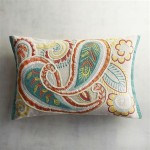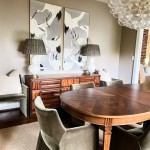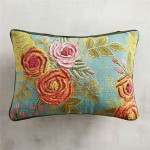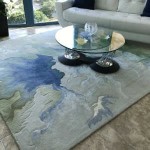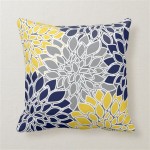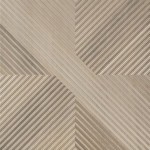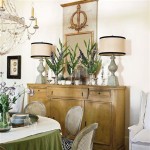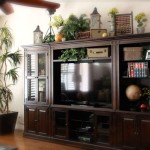Wall Decoration Ideas With Mirrors: Enhancing Space and Style
Mirrors function as more than just reflective surfaces; they present a versatile design element capable of transforming the ambiance of any room. Strategic placement and selection of mirrors can significantly enhance the perception of space, amplify natural light, and introduce an element of sophistication and visual interest to wall decor. The following sections explore various applications of mirrors in wall decoration, providing ideas for different aesthetics and functional needs within the home.The versatility of mirrors allows for integration into diverse interior design styles, from minimalist to maximalist. They can serve as focal points, blend seamlessly with existing decor, or act as subtle enhancers of architectural features. Consideration of size, shape, framing, and placement is crucial to achieving the desired effect. The following sections will delve into specific strategies for incorporating mirrors effectively into wall decoration schemes.
Maximizing Light and Space with Mirror Placement
One of the primary benefits of using mirrors in interior design is their ability to reflect light, thereby brightening a room and creating the illusion of increased space. Strategic placement is vital to maximizing this effect. A well-positioned mirror can capture natural light from a window and distribute it throughout the room, particularly in areas that receive limited sunlight. The size of the mirror should be proportional to the space, with larger mirrors generally being more effective at creating a sense of spaciousness, especially across from large windows.
Darker rooms, such as hallways or interior bathrooms, particularly benefit from the reflective properties of mirrors. In these spaces, consider placing mirrors opposite light sources, such as lamps or sconces. This will amplify the available light and make the room feel less confined. Avoid positioning mirrors in areas where they will reflect clutter or unflattering views, as this can detract from the overall aesthetic. Instead, aim to reflect visually appealing elements, such as artwork, plants, or architectural details.
Another technique involves creating a mirrored wall. This is particularly effective in small spaces, such as studios or apartments, where it can visually double the size of the room. When using a mirrored wall, it's crucial to ensure the reflection is pleasing and doesn't create a disorienting effect. Consider using a section of the wall rather than the entire surface, and incorporate decorative elements to break up the reflection and add visual interest.
Mirrors can also be used to highlight specific features within a room. For example, placing a mirror behind a decorative object, such as a vase or a sculpture, can draw attention to the object and create a sense of depth. Similarly, positioning a mirror near a textured wall can accentuate the texture and add another layer of visual interest to the space.
When hanging mirrors, consider the height and angle of reflection. The ideal height will depend on the intended use of the mirror and the height of the people who will be using it. In general, mirrors should be hung at eye level to provide a clear and comfortable reflection. The angle of reflection should also be considered to avoid glare or distorted images.
Mirror Styles and Framing for Diverse Aesthetics
The style of a mirror and its framing play a significant role in its overall impact on the room's aesthetic. Mirrors are available in a wide range of styles, from sleek and modern to ornate and traditional. The choice of style should complement the existing decor and reflect the desired ambiance of the space. Similarly, the framing can significantly alter the mirror's appearance, adding texture, color, and visual interest.
For modern interiors, minimalist mirrors with clean lines and simple frames are often a good choice. These mirrors typically feature thin metal frames or frameless designs, which emphasize the reflective surface and create a sense of understated elegance. Geometric shapes, such as circles, squares, and rectangles, are commonly used in modern mirror designs.
Traditional interiors often benefit from more ornate mirrors with elaborate frames. These frames may feature intricate carvings, gilded finishes, or decorative moldings. Oval or arched mirrors are popular choices for traditional spaces, as they evoke a sense of timeless elegance. Antique mirrors with distressed finishes can also add character and charm to a traditional room.
Bohemian and eclectic interiors embrace a more relaxed and unconventional approach to mirror selection. Mirrors with unique shapes, textures, and patterns are often used to add personality and visual interest to these spaces. Consider using mirrors with macrame details, mosaic tiles, or reclaimed wood frames to create a one-of-a-kind look.
The size and shape of the mirror should also be carefully considered. Large mirrors can make a statement and create a sense of drama, while smaller mirrors can be used to add subtle accents and reflect light in specific areas. Experiment with different shapes and arrangements to find the perfect fit for the space. A collection of smaller mirrors can be grouped together to create a gallery wall effect.
Frameless mirrors offer a clean and contemporary look and are particularly well-suited for bathrooms and other functional spaces. They create a seamless and minimalist feel, and can be easily integrated into a variety of design styles. Frameless mirrors are also a good choice for small spaces, as they don't add any unnecessary bulk or visual clutter.
Creating Focal Points and Decorative Arrangements with Mirrors
Mirrors can be used effectively as focal points within a room, drawing the eye and creating a sense of visual interest. A large, statement-making mirror can anchor a space and serve as the centerpiece of a wall arrangement. The placement of the mirror is crucial to its effectiveness as a focal point. It should be positioned in a prominent location where it will be easily seen and appreciated.
Consider using a mirror as a headboard in a bedroom. A large, decorative mirror can create a luxurious and dramatic effect, especially when paired with interesting lighting and bedding. Alternatively, a smaller mirror can be hung above a dresser or console table to create a functional and stylish vanity area.
In a living room, a mirror can be placed above a fireplace mantel to create a focal point and reflect light throughout the room. Choose a mirror that complements the style of the fireplace and the overall decor of the space. The mirror can be hung alone or surrounded by other decorative objects, such as artwork, candles, or plants.
Mirrors can also be used to create decorative arrangements on walls. A gallery wall of mirrors in different shapes and sizes can add personality and visual interest to a space. Experiment with different layouts and arrangements to find the perfect composition. Consider incorporating other decorative elements, such as artwork, photographs, or sconces, to create a cohesive and visually appealing display.
A collection of small, decorative mirrors can be grouped together to create a unique and eye-catching wall feature. These mirrors can be arranged in a symmetrical or asymmetrical pattern, depending on the desired aesthetic. Consider using mirrors with different frames and finishes to add texture and visual interest to the arrangement.
Mirrors can also be used to enhance architectural features within a room. For example, placing a mirror in an alcove or niche can create a sense of depth and highlight the architectural details of the space. Similarly, a mirror can be used to accentuate a textured wall or a decorative molding. The key is to use the mirror strategically to draw attention to the features you want to emphasize.
When creating a decorative arrangement with mirrors, consider the overall balance and harmony of the space. The mirrors should complement the existing decor and reflect the desired ambiance of the room. Avoid overcrowding the wall with too many mirrors, as this can create a cluttered and overwhelming effect. Instead, aim for a balanced and cohesive arrangement that enhances the overall aesthetic of the space.
Ultimately, the best wall decoration ideas with mirrors depend on individual preferences and the specific characteristics of the room. By carefully considering size, shape, framing, and placement, individuals can harness the transformative power of mirrors to enhance the beauty and functionality of their homes.

10 Ideas For Decorating With Mirrors Stance Studies On The Family

25 Wall Mirror Decorating Ideas That Will Enhance Your Home Decor

Designer Mirror Ideas For Living Rooms Reflecting Elegance

25 Creative Ideas For Decorating With Mirrors

Decorating Walls With Mirrors Professional Tips To Know Decoholic

Mirror 5 Decorative Wall Ideas To Add Dimension Your Home

How To Decorate With Mirrors The Home

280 Best Mirrored Walls Ideas In 2025 Interior Design Home

Wall Decor Mirrors Take 2 Cococozy

105 Ideas For Entryway Mirrors

